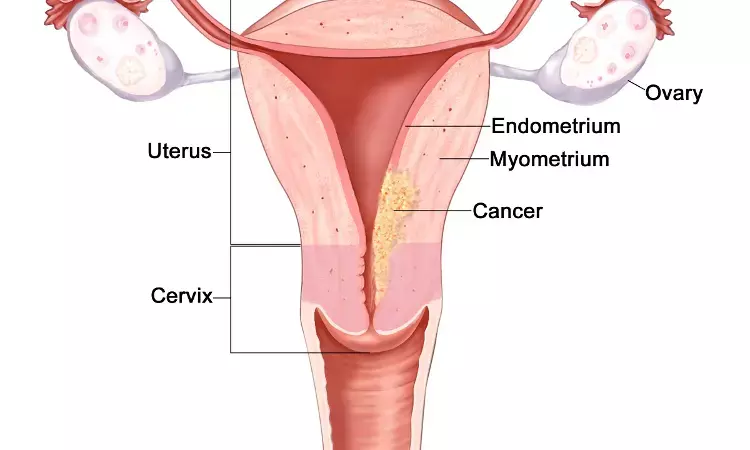- Home
- Medical news & Guidelines
- Anesthesiology
- Cardiology and CTVS
- Critical Care
- Dentistry
- Dermatology
- Diabetes and Endocrinology
- ENT
- Gastroenterology
- Medicine
- Nephrology
- Neurology
- Obstretics-Gynaecology
- Oncology
- Ophthalmology
- Orthopaedics
- Pediatrics-Neonatology
- Psychiatry
- Pulmonology
- Radiology
- Surgery
- Urology
- Laboratory Medicine
- Diet
- Nursing
- Paramedical
- Physiotherapy
- Health news
- Fact Check
- Bone Health Fact Check
- Brain Health Fact Check
- Cancer Related Fact Check
- Child Care Fact Check
- Dental and oral health fact check
- Diabetes and metabolic health fact check
- Diet and Nutrition Fact Check
- Eye and ENT Care Fact Check
- Fitness fact check
- Gut health fact check
- Heart health fact check
- Kidney health fact check
- Medical education fact check
- Men's health fact check
- Respiratory fact check
- Skin and hair care fact check
- Vaccine and Immunization fact check
- Women's health fact check
- AYUSH
- State News
- Andaman and Nicobar Islands
- Andhra Pradesh
- Arunachal Pradesh
- Assam
- Bihar
- Chandigarh
- Chattisgarh
- Dadra and Nagar Haveli
- Daman and Diu
- Delhi
- Goa
- Gujarat
- Haryana
- Himachal Pradesh
- Jammu & Kashmir
- Jharkhand
- Karnataka
- Kerala
- Ladakh
- Lakshadweep
- Madhya Pradesh
- Maharashtra
- Manipur
- Meghalaya
- Mizoram
- Nagaland
- Odisha
- Puducherry
- Punjab
- Rajasthan
- Sikkim
- Tamil Nadu
- Telangana
- Tripura
- Uttar Pradesh
- Uttrakhand
- West Bengal
- Medical Education
- Industry
More live births linked to reduction of incidence of endometrial cancer

U.K.: According to study findings published in BMC Medicine, having more live births causally lowers the risk for endometrial cancer.
According to Gunn-Helen Moen, PhD, of the University of Queensland Institute for Molecular Bioscience in Brisbane, Australia, "It has been demonstrated in the past that having undergone a pregnancy and giving birth is connected with lower risk of endometrial cancer."
It hasn't been proven, though, that this relationship is a cause-and-effect one.
Additionally, when other risk variables including age at menopause, BMI, and the number of live births is acknowledged, it has not been demonstrated that the number of live births has a causal impact on reducing the risk of endometrial cancer.
In order to determine whether this association between the number of live births and a lower risk of endometrial cancer was causal even after controlling for these other established risk factors, the team turned to genetics.
"Precancerous cells in the endometrium may be removed during delivery, according to some theories, or pregnancy may be advantageous due to the protective effects of progesterone, which is produced during the process. Our findings concur with these assumptions "the team asserted.
The purpose of this study was to look into potential causal links between the likelihood of EC and the quantity of live births, age at the last live birth, and years ovulating.
The researchers looked into a number of risk factors and EC risk in the UK Biobank (UKBB) using a series of observational analyses. Also, multivariate analysis was done to clarify the association between the quantity of live births, age at the last live birth, and years ovulating, as well as other parameters including age at menarche, age at natural menopause, and body mass index that are associated. They tested the causality of these apparent connections using Mendelian randomization (MR).
The number of live births, menopause and menarche ages, and BMI of women were previously studied. From these research, genome-wide significant single nucleotide polymorphisms (SNPs) were derived. They used the UKBB to do a genome-wide association analysis to find SNPs connected to years ovulating, years taking the pill, and age of last survivor.
Major highlights:
- More live births reduced endometrial cancer risk (OR = 0.537; 95% CI, 0.344-0.838) in univariate models, but more years of ovulation raised endometrial cancer risk (OR = 1.051; 95% CI, 1.011-1.093).
- In multivariable analysis, the likelihood of developing endometrial cancer was independently correlated with the number of live births (OR = 0.783; 95% CI, 0.623-0.985). ovulation duration and its relationship.
- Age at menopause did not have an independent causal influence on endometrial cancer risk, according to additional multivariable analyses of BMI, age at menarche, and age at menopause, implying that this previously discussed link could be confounded by BMI or age at menarche.
"Our results imply that the age at which a woman last gave birth may be influenced through the causal impact of the number of live births on EC risk, and this association should be further studied," Gunn-Helen Moen and colleagues concluded.
These results should be used by clinicians to assist identify women who are at risk for endometrial cancer.
REFERENCE
D'Urso, S., Arumugam, P., Weider, T. et al. Mendelian randomization analysis of factors related to ovulation and reproductive function and endometrial cancer risk. BMC Med 20, 419 (2022). https://doi.org/10.1186/s12916-022-02585-w
Dr Kamal Kant Kohli-MBBS, DTCD- a chest specialist with more than 30 years of practice and a flair for writing clinical articles, Dr Kamal Kant Kohli joined Medical Dialogues as a Chief Editor of Medical News. Besides writing articles, as an editor, he proofreads and verifies all the medical content published on Medical Dialogues including those coming from journals, studies,medical conferences,guidelines etc. Email: drkohli@medicaldialogues.in. Contact no. 011-43720751


